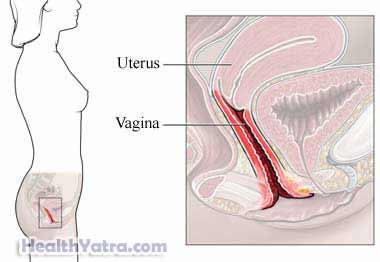Definition
Vaginismus is an uncontrolled, involuntary spasm of the muscles that surround the vagina. These spasms cause sexual intercourse to be painful. It is a complex disorder. It is both a psychological and physical condition.
Vaginismus is not common. Less than 2% of women in the United States are affected. It can cause severe physical and psychological pain. If you suspect you have this condition, talk to your doctor.

Causes
Vaginismus is usually a response to past sexual trauma or other painful events. The fear of pain can start a painful muscle spasm. Sex is then associated with fear and pain. Sometimes no obvious cause can be found.
There are two forms of vaginismus, primary and secondary. Primary vaginismus is diagnosed in women who have never had successful sexual intercourse due to pain or the anticipation of pain. Secondary vaginismus is diagnosed if a woman has had a successful experience without painful intercourse in the past.
Risk Factors
Risk factors for vaginismus include:
- History of sexual abuse or trauma
- A frightening childhood medical procedure
- Painful first intercourse
- Relationship problems
- Sexual inhibition
- Fear of pregnancy
- Memory of previous pain due to infection, surgery, or other gynecologic conditions
Symptoms
Symptoms of vaginismus can range in severity. Women with this disorder are not able to have sexual intercourse without pain. Some women may also have pain during pelvic exams or while inserting a tampon.
Diagnosis
Your doctor will ask you about your symptoms and medical history. A physical exam will be done. A vaginal spasm may be detected during the pelvic exam, This can confirm the diagnosis of vaginismus.
The insertion of a speculum (device used to gently open the vagina) may be impossible. Vaginal fluid may be minimal. In severe cases, local or general anesthesia may be used to perform an exam.
Treatment
Treatment usually combines counseling, education, and muscle exercises. Treatment options include:
Kegel Exercises
Kegel exercises cause the repeated contraction and relaxation of the pelvic muscles. The exercises can help improve control over the vaginal muscles.
Vaginal Dilation Exercises
Vaginal dilation exercises use the patient’s own fingers or plastic instruments called dilators. The dilators are gradually increased in size and placed in the vagina over time. Women may be asked to practice Kegel exercises while the dilators are in the vagina.
After patients have reached a level of comfort, sexual intercourse is attempted. Patients may be asked to place the dilators themselves. But, the program is supervised by a healthcare provider.
Educational Treatment
Fear of sex is a large part of this disorder. Educating women is an important part of treatment. Women are taught about sex organs and how they work. The sexual response cycle and common sex myths are also discussed.
Counseling
Depending on the cause, psychological counseling is often central to the treatment of vaginismus. It is particularly helpful to those with primary vaginismus due to sexual abuse or trauma.
Prevention
To help reduce your chances of getting vaginismus, talk to your doctor or healthcare provider right away if you experience pain with intercourse. Vaginismus can become an automatic response if the pain is not treated promptly.
